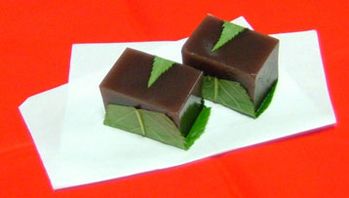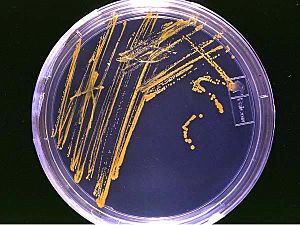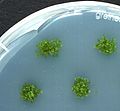Agar facts for kids
Agar or agar-agar is a jelly-like substance that comes from algae. It was first found in Japan in the late 1650s or early 1660s by Mino Tarōzaemon. In Japan, it is called kanten.
Agar is made from a type of polysaccharide called agarose. This agarose forms the main structure in the cell walls of certain types of algae. It is released when these algae are boiled. These algae are known as agarophytes and are part of the Rhodophyta group, which are red algae.
For making agar to sell, it mostly comes from a type of algae called Gelidium amansii. Chemically, agar is a polymer, which means it's a large molecule made of many smaller units. These smaller units are a sugar called galactose. Agar from Gelidium is mostly used for growing bacteria in labs. Agar from Gracilaria algae is mainly used in food.
Agar in Food
For a long time, and even today, agar has been used in desserts all over Asia. Agar-agar is a natural plant-based alternative to gelatin. It is white and somewhat clear. You can buy it as dried strips or in powder form. It's great for making jellies, puddings, and custards.
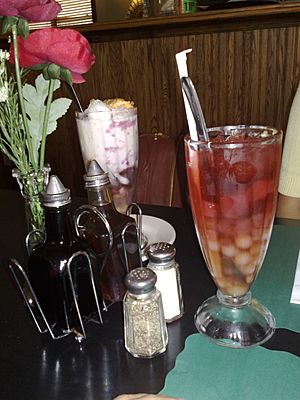
To make jelly, you boil agar in water until it dissolves. Then, you can add sweetener, flavor, color, fruit, or vegetables. The liquid is then poured into molds to create desserts or savory dishes called aspics. It can also be used as a jelly layer in a cake.
Agar-agar is about 80% fiber, which helps with digestion. Because it expands and absorbs water, it has been used in some popular diets in Asia, like the kanten diet in Japan. When eaten, kanten can triple in size, making people feel fuller. This diet has also gained attention in other countries and shows promise in studies about weight loss.
Agar can also be used as a mild laxative or to help reduce appetite. It's a popular vegetarian substitute for gelatin. You can also find it as a thickener in soups, fruit preserves, ice cream, and other desserts. It can even help make liquids clearer in brewing.
Agar-agar is an approved natural additive in organic foods. It works as a thickener, gelling agent, and helps with texture, moisture, and flavor.
Agar in Science
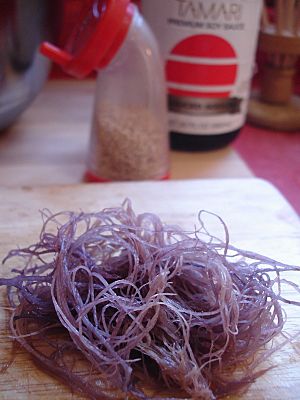
Agar was first used in microbiology in 1882. A German microbiologist named Walther Hesse, who worked with Robert Koch, started using it. His wife, Angelina Fannie Eilshemius Hesse, suggested it. He found that agar was better than gelatin for making solid surfaces to grow tiny living things. This was because agar stays solid at warmer temperatures.
The French chemist Anselme Payen first studied agar chemically in 1859. He got his agar from a marine algae called Gelidium corneum.
An agar plate, often in a Petri dish, is a special dish used in labs. It contains a mix of agar and other nutrients. This mix creates a solid surface where tiny organisms like bacteria and fungi can grow. Scientists can then study them under a microscope. Agar is good for this because many organisms cannot digest it, so the gel stays firm and stable.
Other Uses of Agar
Agar is also used in other interesting ways:
- As a material to make impressions in dentistry.
- To create salt bridges and gel plugs in electrochemistry.
- In formicariums (ant farms) as a clear substitute for sand and a food source.
- As a natural ingredient to make modelling clay for young children.
- As an approved part of biofertilizers in organic farming.
Images for kids
-
A blood agar plate used to grow bacteria and help diagnose infections.
-
100mm (4") diameter Petri dishes containing agar gel for bacterial culture.
-
Physcomitrella patens plants growing axenically in vitro on agar plates (Petri dish, 9 cm, 3½" diameter).
See also
 In Spanish: Agar-agar para niños
In Spanish: Agar-agar para niños


